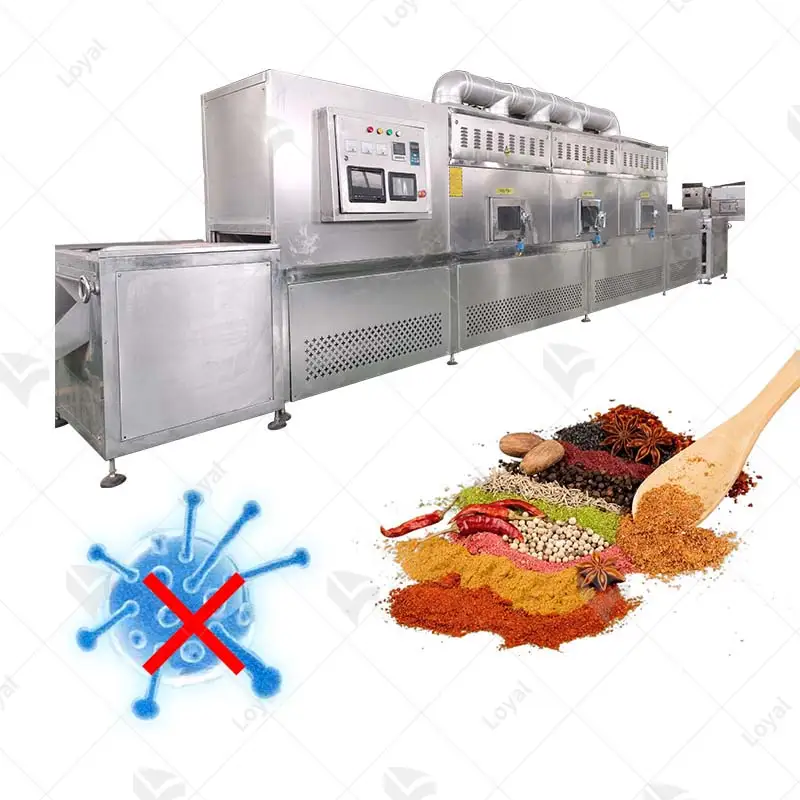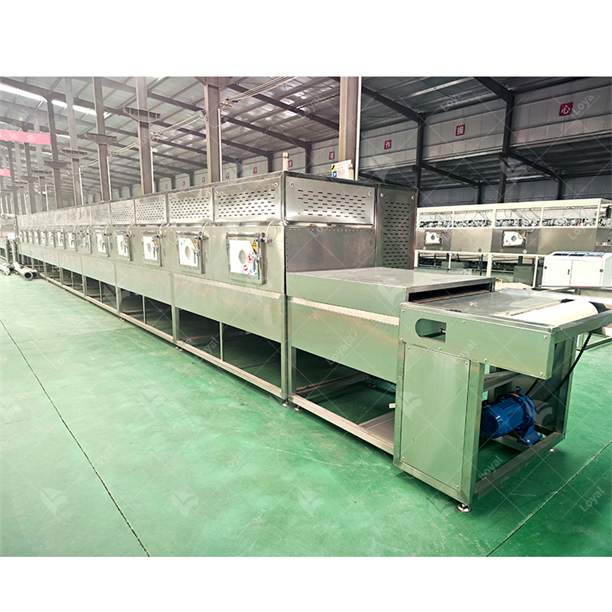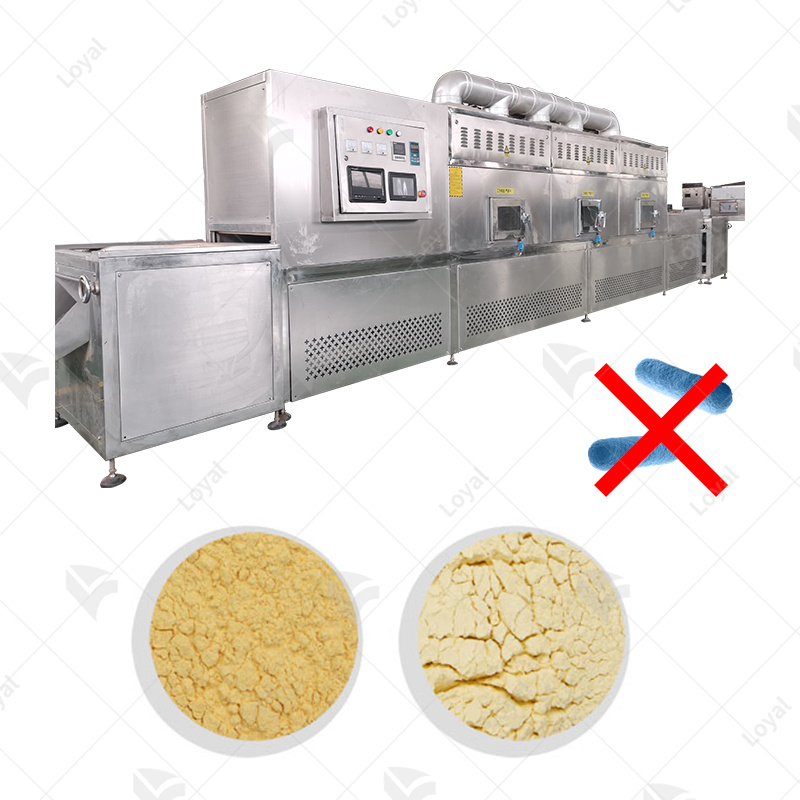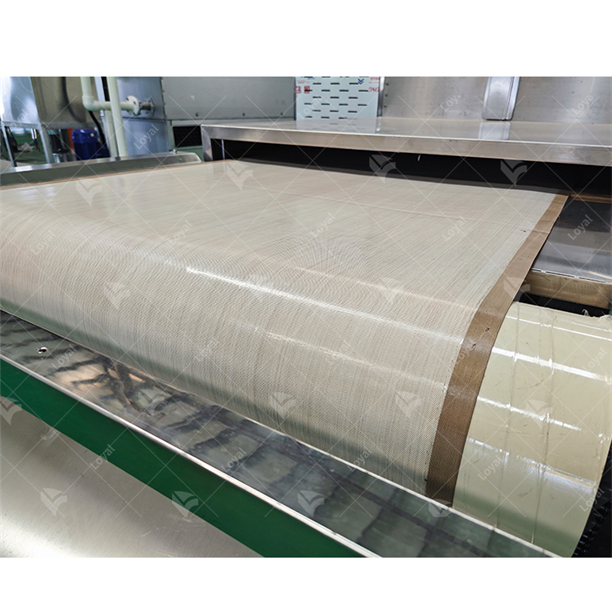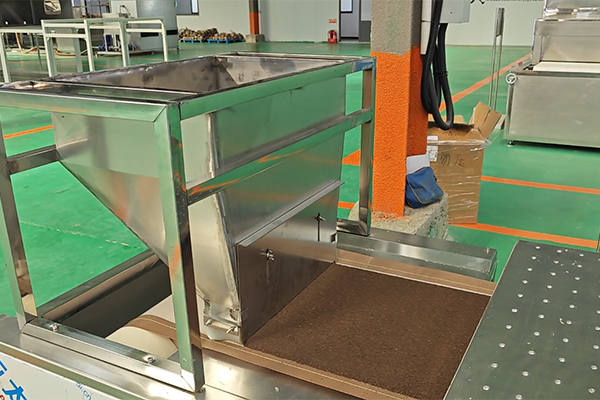Food sterilization is an important process that guarantees the safety and durability of food. Food sterilizer removes or render harmless all types of life, including bacteria, viruses, fungi, and spores, thus ensuring public health standards are maintained. This article provides a comprehensive overview of food sterilizer machines, which explains how they work, what they do, and how science backs their efficiency. It is advisable to examine different methods of food sterilization, technological breakthroughs in this area as well as the best ways to optimize the sterilization process. Suppose you are a professional in the food industry or just a consumer interested in it. In that case, this guide will help you be aware of all keys aspects involved in effective food sterilization.
What is Food Sterilization and Why is it Important?
Food sterilization is removing or inactivating all potentially harmful microorganisms such as bacteria, viruses, fungi and spores from food products. This procedure is vital for avoiding foodborne diseases and ensuring the safety of edible products. Sterilization extends the shelf life of groceries, minimizes wastage, and keeps their nutritious value for a longer period. Different techniques like heat treatment, irradiation and chemical applications are used to achieve satisfactory sterilization. To comply with health regulations and produce safe foods, proper understanding and mastery of appropriate food sterilization methods is essential.
What is the meaning of food sterilizer?
A device that has been invented specifically to destroy all the dangerous organisms found in foods, rendering them safe by prolonging their shelf life, is called a food sterilizer. Food sterilizers differ based on the technique employed, which depends on different scientific principles applied. The following are the most commonly known ways;
- Heat Treatment: By using very high temperatures can be used to kill microbes such as through pasteurization or autoclaving.
- Microwave: This method uses microwave radiation to ensure that no bacteria or any other pathogen remains in it thus making it clean.
- Pasteurization Temperature: 72°C (161°F) for 15 seconds.
- Autoclaving Temperature: 121°C (250°F) for 15-30 minutes.
- Irradiation: These include gamma rays, X-rays, or electron beams emitted at an organism to interfere with its DNA and, hence, effectively neutralize it.
- Dosage: It ranges from one to ten kiloGray, depending on what you are talking about and the process used.
- Chemical Applications: This entails use of chemicals such as ethylene oxide, ozone, or hydrogen peroxide vapor that kills microorganisms
- Ethylene Oxide Concentration: Usually mixed with some temperature level together with humidity somewhere at around 450-1200 mg/L
- Hydrogen Peroxide Vapor Concentration: 35-90%.
Depending on the type of food and the desired outcome, these methods are chosen and optimized to ensure effective sterilization and preservation of the food’s quality.
How does sterilization of food work?
Food sterilization is a combination of methods that aim to destroy or inactivate harmful or spoilage-causing microorganisms. The main techniques include thermal methods, irradiation, and chemical treatments. All these forms of sterilization are parameter-specific, making them efficient at all times without compromising on food quality.
- Thermal Methods
- Heat Treatment: Microorganisms are killed by high temperatures. Most common ones are pasteurization and autoclaving.
- Microwave: Kills bacteria and other organisms through heating using microwaves thereby making items clean within a short time.
- Pasteurization: 15 seconds at 72°C (161°F) to kill most pathogens, but still allow for palatability and nutritive value retention.
- Autoclaving: Steam under pressure at 121°C (250°F) for 15-30 minutes kills microorganisms more effectively than any other means currently available in science laboratories.
- Irradiation: Exposing foods to ionizing radiation(via gamma rays/x-rays/electron beams).This energy results in disruptions of microbial DNA thus killing off these pathogens completely.
- Gamma Rays/X-Rays/Electron Beams Dosage: Food sensitivity normally dictates using between one to ten kGy as a measure of sterility level required.
- Chemical Treatments
- Ethylene Oxide (EtO): Dry foods and spices are commonly treated with this gas sterilant having concentrations ranging from 450mg/L up to 1200mg/L (combined with temperature & humidity control)
- Ozone: Ozone is either applied in gaseous or aqueous state & acts as a strong oxidizer that decommission pathogens e.g. bacteria,virus etc.
- Hydrogen peroxide vapor (HPV) sterilizes packing and food surfaces by disrupting microbes’ cell structure; its concentration can range from 35% to 90%.
The choice of sterilization method depends on the nature of the food stuff, with emphasis on effectiveness, safety and maintenance of quality parameters that are acceptable for human usage.
What are the benefits of using a food sterilizer machine?
A food sterilizer machine is advantageous in numerous ways, which are in line with both the safety of consumers and quality of food. To begin with, through these machines, harmful microorganisms such as bacteria, viruses, and fungi are effectively killed, hence reducing the chances of getting food-borne illnesses. Food sterilizers make use of techniques such as steam sterilization, irradiation or chemical treatments to achieve high degrees of disinfection without affecting the nutritional value and sensory aspects of the food.
One major advantage is that sterilized products have a longer life span. By killing spoilage-causing microorganisms, food sterilizers maintain product freshness over a prolonged period hence reducing waste and enhancing economic efficiency. Additionally, precision parameters like temperature (e.g., 121°C for autoclaving), radiation dosage (e.g., 1-10 kGy for irradiation) or chemical concentration (e.g., 450-1200 mg/L for EtO) can be used to tailor food sterilizers to specific products thus ensuring optimum sterilization while still preserving the wholesomeness of the food.
Moreover, using food sterilizing machines accords with regulatory standards and consumer safety guidelines, which increases the marketability of the goods. This act not only boosts customers’ trust but also meets strict standards set by authorities regarding safe foods, meaning that producers can sell their products internationally without being concerned about compliance issues.
How Does a Microwave Sterilizer Work for Food Processing?
Microwave sterilizers work by generating electromagnetic waves, mostly at a frequency of 2.45 GHz, which penetrate foodstuffs and bring about thermal and non-thermal effects. When water molecules in the food oscillate in this manner, heat is generated through molecular friction, which results in bacterial spores and other pathogens being effectively killed off. Uniform heating is allowed due to the thermal energy produced within the food, thus eliminating cold spots that may harbor microorganisms. Besides, non-thermal effects like changes in cellular structure and increased permeability of microbial cell membranes contribute to an improved level of sterilization. In addition, microwave sterilization is often used together with vacuum packaging material as a way of protecting against oxidative changes, hence preserving the nutritional quality and sensory appeal of the food while prolonging shelf life.
What impact does Microwave have on Food Sterilization?
Microwave sterilization affects foods through use of electromagnetic waves for producing thermal effects that end up leading to heat generation. The heat uniformly absorbs into the food, ensuring that it gets rid of bacteria, viruses, and other microorganisms without compromising much on its quality. It also maintains nutritional value as well as sensory attributes making it preferable for maintaining safety against poisoning from food contamination while increasing storage period. This implies that when properly packaged, using microwave sterilisation can achieve high levels of microbial inactivation with minimal loss of taste or texture degradation for such products (Shaw et al., 2005).
Different Types of Food Sterilizers: Which One to Choose?
Different kinds of food sterilization methods are available in the market, each suited to different applications. Autoclaves use high-pressure steam for sterilization, making them effective for various foods, but they can also affect texture and nutrition content. Ultraviolet light sterilizers, on the other hand, use UV-C light to kill surface microorganisms present on food products and packaging, which makes them more ideal for dry materials and surfaces rather than bulk liquids or solid foods that do not allow sufficient penetration of light. Microwave sterilizers, as previously explained, offer rapid and uniform heating at a balance between microbial inactivation and the retention of food quality. It is necessary to choose a method of sterilizing food with regard to its particular needs such as, composition, packaging and other factors affecting safety requirements.
What’s different between microwave and autoclave sterilizer?
Microwave sterilizers differ from autoclave ones in terms of their mechanism, application area and technical characteristics. Microwaves make use of electromagnetic waves that heat up by interacting with water molecules in food causing fast even heating while autoclaves employ steam under pressure often at 121?C for about 15-20 minutes to kill all sorts of germs.
- Mechanism Of Action:
- Microwave Sterilizers: This is achieved by utilizing microwaving process; microwaves move water molecules hence generating heat which can kill bacteria through this means.This technique covers both internal as well as surface levels because microwaves have limited penetration ability.
- Autoclave Sterilizers work by direct transfer of heat using saturated steam under pressure.The increased temperature inside the unit kills off the organisms’ proteins, leading to complete sterility.
- Applications:
- Microwave Sterilizers: Appropriate for products made from ingredients that easily break down when exposed to high temperatures like fruits juices among others, therefore low processing times coupled with minimal loss in nutritional composition or taste sensation
- Autoclave Sterilizers: They are widely employed in medical, laboratory and food industries as well as for canned foods and medical instruments but may affect the texture or nutritional value of some food products.
Technical Parameters:
- Microwave Sterilizers:
- Frequency: At 2.45 GHz
- Power: 500 – 1000 watts.
- Temperature: up to 100°C (depending on water content).
- Autoclave Sterilizers:
- Temperature: From about 121-134°C approximately.
- Pressure: Usually between 15-30 psi.
- Time: Sterilization cycles usually last from fifteen minutes at a temperature of one hundred twenty one degrees Celsius to twenty minutes or three-five minutes at one hundred thirty four degrees Celsius.
The choice between microwave and autoclave sterilizers should be guided by specific sterilization needs, considering the type of food or material, desired retention of quality, and operational efficiencies.
What is a steam sterilizer and how is it used?
A steam sterilizer, also referred to as an autoclave, is a machine that uses high-pressure steam saturated with the intention of eliminating pathogens and spores from tools, equipment, and other objects. The basic principle of this involves heating water up to its boiling point, leading to the generation of steam that is forced into the sterilization chamber under pressure. Consequently, apart from raising water temperature above its normal boiling point, usually 121°C or 134°C on average, proteins get denatured due to this environment, thus destroying the microorganisms in question. Time, temperature and pressure are utilized within predetermined boundaries to achieve sterile outcomes. For instance, healthcare facilities, laboratories and food industries make use of steam sterilizers for ensuring the sterility of instruments such as glassware and other items. Properly loading, ensuring adequate penetration of steam as well as maintaining correct parameters throughout cycle is critical to the effectiveness of steam sterilization.
What benefits do retort sterilizers provide to food industry?
By applying high-temperature processing in a sealed atmosphere, pathogenic microorganisms and spores are removed by retort sterilizers thereby increasing shelf life without preservatives being applied. These have been observed by various studies on this issue (Arvanitoyannis & Ladas 2010; Wall et al., 2001). Because it is effective, especially for low-acid foods, brands can keep the organoleptic properties but also the nutritional value of their product while they gain a safety margin through mild heat treatment (Nicolaï & De Baerdemaeker 2003). Therefore, retort sterilization process enables large scale production under these conditions whereby reliable results can be obtained consistently thereby enhancing operations efficiency since it meets strict quality control requirements for effective safety measures in food manufacturing sector where hygienic standards are enforced by law.
Applications and Uses of Sterilizer Machines in the Food Industry
The sterilizer machines, particularly the retort sterilizers are very important to the food industry; they are used to ensure that various food items are microbiologically safe and to increase their lifespans. They are typically used to preserve canned foods, pet foods, ready-to-eat meals, and dairy products where they undergo high temperature and pressure steam treatment. In this method, harmful bacteria and spores are killed while still maintaining the taste, texture and nutritional value of a given food item. Moreover, batch processing is facilitated by retort sterilizers making them useful for both small scale and large scale productions. Through these strict regulatory guidelines and hygienic standards, manufacturers ensure that consumers get safe quality food products.
How can you sterilize packaged and canned foods?
In effect therefore, packaged or canned foods are mainly subjected to retort sterilization which involves putting sealed food containers in a pressurized vessel referred to as retort. The process starts with heating, where steam is injected in order to achieve a specific temperature, usually between 116°C – 121°C (240°F -250°F), depending on the kind of food being processed and its acidity level. This hot steam permeates into the containers effectively killing any microorganisms present there including spores too. Then there is the holding phase, where the temperature has to be kept steady for some predetermined time period, which is normally 20-40 minutes thereabout. Microbial deactivation without adversely affecting quality attributes such as F0 value that measures the sterility of this process however must always be checked.
After the heating and holding stages have been completed, therefore, cooling takes place, which mainly involves the reduction of container temperatures through water sprays or immersion processes aimed at protecting package integrity from destruction in addition to prevention of overcooking occurring. This process ensures commercial sterility because it ensures that harmful pathogens don’t exist, hence rendering them storable at room temperature for a long time. All the critical parameters which were involved in the sterilization process like time, temperature, pressure and F0 value are controlled and duly validated as per the strict food safety standards thus enabling both effectiveness and consistency in the final product.
What does the presence of food autoclaves imply on the beverage business?
Thus, food autoclaves play a major role in ensuring that different types of liquid products have microbial safety and shelf stability within the beverage industry. Batch processing is conducted by these devices, specifically designed to handle beverages under well-defined temperature and pressure environments that disable spoilage microorganisms, including pathogenic strains. For example, such processes are necessary for juices, dairy products, and ready-to-drink teas.
Key technical parameters include:
- Temperature: 115°C – 130°C (239°F – 266°F) depending on type of beverage and its composition
- Pressure: Steam penetration inside containers is usually maintained at around 15-30 psi
- Time: Sterilization times can range between 10 to 15 minutes or even more so as to allow commercial sterility but not at an expense of sensory attributes.
- Cooling Process: To avoid overprocessing and maintain packaging integrity fast cooling techniques involving water immersion or sprays used.
These parameters are optimized based on the beverage’s pH level, viscosity, and packaging material, among other factors, while meeting stringent industry regulations/standards for assuring safety and quality. Manufacturers can make beverages that remain safe for consumption for quite long periods even when kept under room temperatures by applying food autoclaves.
What are the benefits of sterilizer machines in food processing?
Sterilizer machines, for example autoclaves, participate to a great extent in improving food processing through elimination of harmful microorganisms that could lead to spoiling and food poisoning. Their purpose is to utilize high-temperature steam for sterilizing products, hence killing bacteria, viruses, and spores. As a result of sterilization, food processors can lengthen the shelf life appreciably while preserving the superior quality of their goods and assuring adherence with sanitary as well as safety requirements. Additionally, contemporary sterilizers come with sophisticated control systems which enable close monitoring and optimization of sterilization cycles thereby facilitating efficiency in production. For this reason, there is no doubt that sterilizer machines are indispensable instruments for ensuring high standards regarding both quality and safety aspects in the area of nutrition.
Factors to Consider When Choosing Food Sterilization Equipment
Several key factors should be considered when picking food sterilization equipment to guarantee excellent performance and conformity with safety standards. First, assess the type of product being processed because different foods require specific sterilization techniques and machines. Next, determine whether or not the production capacity and equipment scalability fits your output needs to ensure that the sterilizer at hand can process both the present and future volumes. Another important factor is control and monitoring systems which enhance precise cycle adjustments thus ensuring effective consistent sterilization. In addition, one should also consider the maintenance requirements and ease of operation since user-friendly and low-maintenance equipment can lead to higher downtime and operating costs. Lastly, make sure that it complies with all regulatory and safety standards applicable while providing guarantees for adherence to industrial guidelines.
What is important in a food sterilizer machine?
What technical parameters should be considered when selecting a food sterilizer machine to achieve efficient processing?
- Pressure and Temperature Control: For proper sterilization accurate regulation is required hence this calls for machine with precise temperature setting as well as pressure control. Optimum temperatures mostly range from 110°C-135°C while pressure settings should be changeable depending on production demands
- Chamber Capacity and Load Size: Evaluate how big the chamber is; also check the maximum load size that can be accommodated by the particular sterilizer under consideration. This statistic directly affects throughput. As an illustration, if you want a medium scale facility then get one with 500 litres chamber volume but go for the bigger ones if you need high throughput.
- Cycle Time and Automation: Choose machines with shorter cycle times, typically between 30 and 60 minutes, depending upon product types and load sizes. Furthermore, programmable logic controllers (PLCs) and human-machine interfaces (HMIs) are other more advanced automation features that enable custom cycle programming and real-time monitoring, thereby improving operational efficiency and consistency.
By considering these technical parameters, you can ensure that the chosen food sterilizer machine meets your production and quality assurance requirements while maintaining regulatory compliance.
To what extent does the food grade quality influence sterilization equipment?
Food grade quality is critical in a sterilizer as it ensures adherence to safety and sanitation regulations, minimizes the risk of contamination and maintains the integrity of food products. Commonly used high-quality materials include stainless steel for its corrosion resistance properties and ease of cleaning which are indispensable in keeping sterile conditions. Besides, there must be no harborage points on the surface of any equipment so that microorganisms do not grow there.
It is important to consider following technical parameters when evaluating food grade quality of sterilization equipment:
- Material Composition: Equipment has to be made from materials that are nonreactive with foods, nontoxic, and safe for use on food surfaces. The most frequently applied grades of stainless steel are 304 and 316 due to their excellent resistance to corrosion and ease of cleaning.
- Surface Finish: The sterilization chamber’s and other associated parts’ surface finish should have been polished to lower bacterial adhesion rates, usually with a roughness average (Ra) value of 0.8 micrometers or less.
- Seals and Gaskets: Food-grade seals, which do not deteriorate when subjected to different temperatures or pressures during sterilizing agents exposure, hence providing an effective barrier against contaminants such as bacteria, can be made using silicone or PTFE, among other materials.
- When it comes to the certification of compliance, devices are supposed to follow the rules as set by regulatory bodies such as FDA, EU and NSF ensuring that they meet strict food safety requirements.
In maintaining food safety, protecting consumer health and meeting regulatory needs; sterilization equipment must be given priority for its food grade quality.
Maintaining and Operating Microwave Food Sterilizer Machines
In order to maintain an efficient and effective operation of microwave food sterilizers, regular maintenance and adherence to operating protocols are necessary. Maintenance should encompass routine inspection for wear on internal parts with a special focus on the magnetron which is vital for generating microwaves in proper working condition. Moreover, cleaning must be regularly done to remove any food remains that would interfere with operations or cause contamination. Additionally, filters must be checked and replaced occasionally in order to maintain optimum air flow.
From a standpoint of operation, it is important for one to follow the manufacturer’s guidelines on loading of the sterilizer so that overloading can be avoided which may reduce efficiency and uneven sterilization. Operators should understand specific settings and controls available on the machine so that they are able to choose correct power levels and exposure times for various kinds of foods. In addition, frequent calibration of temperature sensors and control systems within this system is important in upholding accurate temperature measurements as well as exposure readings. Through these detailed maintenance and operating protocols, durability plus reliability of such machines are guaranteed hence ensuring safety and maintaining quality standards of food.
Which are some common maintenance practices for sterilizers?
Some common maintenance practices for sterilizers involve routine sanitation aimed at avoiding the accumulation of residues or contaminants that could hinder sterilization from taking place normally. Regular checking as well as testing procedures on key components, including seals and door valves, ensures their good status, thus maintaining their integrity. Other important checks include: calibrations checks (temperature/pressure gauges) which confirm that the unit operates within ranges established by regulations; replacement gaskets/filters/heating elements whenever worn out so as not to jeopardize its operational capacity; recommended documentation all through this period since performance tracking might be part of audit requirements. By doing this, we will sustain efficiency and safety of sterility equipment.
How do you ensure safety when using Microwave Food Sterilization Equipment?
To guarantee safety while using microwave food sterilization equipment, operators have to follow some important guidelines.
- Training and Certification: Make sure all operators are trained and certified on the equipment. This includes reading the operational manual of the machine as well as safety protocols associated with it.
- Personal Protective Equipment (PPE): Avoidance of burns or exposure to microwaves or hot surfaces/steam can be mitigated using appropriate PPE like gloves, goggles and lab coat for all workers.
- Regular Maintenance: Perform regular maintenance as stated in the manufacturer’s guidelines. Checking seals, inspecting electrical connections, and ensuring that all safety interlocks are functioning properly to avoid unintentional releases should be among the basic checks any operator should perform.
- Emergency Procedures: Implement and practice emergency shutdown procedures. Operators should know how to quickly power down their devices safely whenever necessary due to dangers such overheating or microwave energy leakage.
- Proper Loading and Unloading: Proper loading and unloading will prevent spilling food products while they are being sterilized, uneven heating, or overfilling, which could lead to machine breakdowns or endanger human life during its use.
By following these critical safety precautions, the risks involved in running microwave food sterilization equipment can be effectively reduced, thereby preserving operator safety and integrity throughout this process.
Tips for improved operation and efficiency
To achieve optimal operation and efficiency in microwave food sterilization, do the following:
- Calibrate Regularly: Regular calibration of the microwave sterilization equipment ensures it operates at peak efficiency and maintains consistent performance. Calibration should be carried out according to the manufacturer’s instructions and well documented.
- Monitor Moisture and Temperature: Consistently monitor moisture levels and temperatures of both equipment and food products. Proper moisture levels are important for effective sterilization because they affect the distribution of microwave energy. Additionally, proper temperature must be maintained to avoid under or over-sterilizing.
- Optimize Load Configuration: Arrange food items in such a way that their exposure to microwave energy is even. This typically involves spacing items out equally as well as not overcrowding the chamber during sterilization since this may cause uneven heating thus rendering it inefficient.
- Utilize Pulsed Microwave Energy: In some cases, using pulsed microwave energy instead of continuous waves may facilitate penetration and uniformity hence making sterilization more efficient.
- Ensure Adequate Pre-Treatment: Pre-treating commodities by eliminating surface contaminants and appropriate hydration can enhance efficacy of microwave sterilization processes. Pre-treatment stages should conform to specific needs stipulated for particular foods being processed for sterility reasons.
By adhering closely to these practices, operators will be able to increase productivity and ensure product safety by efficiently using time and resources for this machine.
Frequently Asked Questions (FAQs)
Q: What is a food sterilization machine?
A: A food sterilization machine is a device designed to sterilize food products by using high temperature and pressure to eliminate harmful microorganisms, ensuring food safety and prolonged shelf life.
Q: How does an industrial autoclave work in food sterilization?
A: An industrial autoclave works by applying steam at high pressure and temperature to sterilize food. The autoclave sterilization process ensures that even the most resistant bacteria and spores are destroyed.
Q: Can a sterilization machine be used for packaged food?
A: Yes, a sterilization machine can be effectively used for packaged food, including products packed in pouches and cans. This ensures that the contents are sterile and safe to consume.
Q: What is the difference between a retort autoclave and a standard autoclave?
A: A retort autoclave, also known as an autoclave retort sterilizer, is specifically designed for food processing, allowing for precise control over temperature and pressure to ensure uniform sterilization. Standard autoclaves may not offer the same degree of control and are often used for general sterilization purposes.
Q: How is hot air sterilization different from autoclave steam sterilizer methods?
A: Hot air sterilization uses dry heat to sterilize food products while an autoclave steam sterilizer utilizes steam under high pressure. The steam method is generally faster and more effective at penetrating packaging materials.
Q: What are the benefits of using a retort machine in food sterilization?
A: A retort machine offers several benefits, including uniform heating, efficient sterilization, and the ability to process a variety of food types and packaging. It ensures that the food remains safe to eat and retains its quality over longer periods.
Q: Is it possible to get a wholesale food sterilization machine?
A: Yes, many manufacturers offer the option to buy a wholesale food sterilization machine, providing businesses with cost-effective solutions for large-scale food processing and sterilization needs.
Q: What types of food can be sterilized using an autoclave food sterilizer?
A: An autoclave food sterilizer can be used to sterilize a wide range of food products, including canned foods, pouches, pet food, and other packaged food items. This ensures the destruction of harmful microorganisms and extends the shelf life of the food.
Q: How does the control system work in an automatic food sterilizer machine?
A: The control system in an automatic food sterilizer machine regulates the temperature and pressure within the device to ensure even and consistent sterilization. It automates the process, reducing the need for manual intervention and improving safety and efficiency.
Q: What should I consider when choosing an industrial food sterilizer machine?
A: When choosing an industrial food sterilizer machine, consider factors such as the type of food products you are processing, the required capacity, the sterilization method, and whether you need features like advanced control systems or the capability to handle different packaging types.













